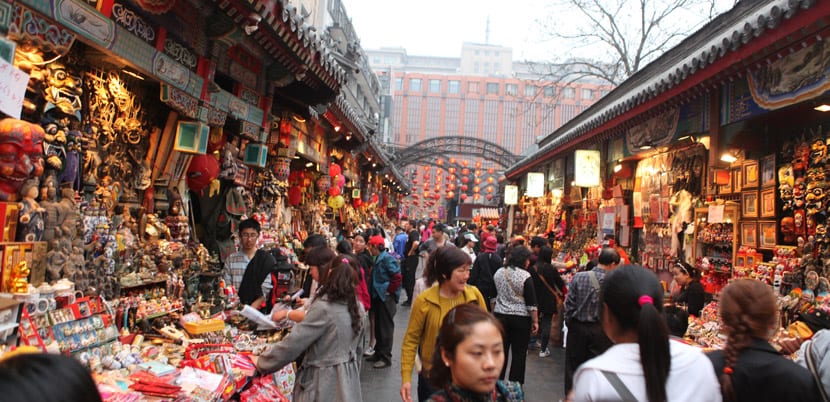
Beijing is the capital of China and it is in the north of the country. It is usually the gateway to China and although many tourists pass through Hong Kong or Shanghai first they always touch, sooner or later, Beijing, the imperial city.
Beijing is the political center of the country but at the same time it is an important neurological point of transport to move around this huge nation. It has many tourist attractions (historical, cultural, architectural, gastronomic), and at the same time it is a good destination to go shopping. It is not the shopping paradise that Hong Kong is but it has its own thing, so If you want to go shopping in Beijing here is good practical information to uncover the wallet.
What to buy in Beijing
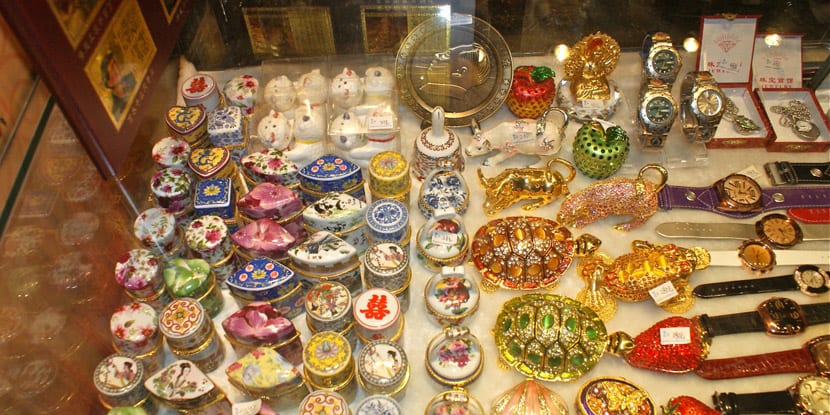
First thing's first. You must know what the city offers to choose where to go to buy each item. In principle, Beijing is a century-old city and traditional Chinese handicrafts are in the shops and workshops of the city. I speak of carvings in jade, ivory, lacquered objects, silk garments, glass bottles with figures inside, embroidery, lace and artificial flowers, among other curiosities. There is also a lot of memorabilia of Chinese communism with Mao at the helm.
Jade is considered a precious stone here in China and in other times having some jade was synonymous with wealth and ancestry. You can buy vases, glasses, vases, figures of animals, real and mythological such as dragons or phoenixes, and a lot of jewelry. Enameled objects, with honeycombed enamel, also called cloisonne, are another of the traditional Chinese crafts. In these objects, blue and gold tend to prevail and are usually seen in lamps, smoking sets and vessels.
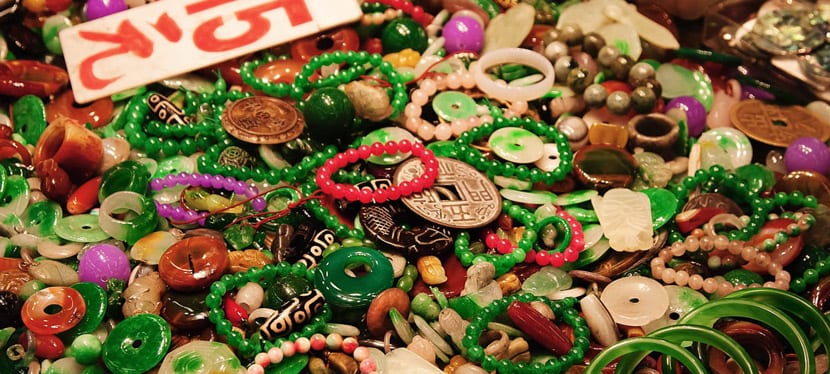
Ivory carvings have a history of thousands of years and the Chinese have perfected the technique to impressive levels of excellence. Knife handles, combs and combs and toiletries they are the most common. Of course, today ivory is scarce and they are expensive objects, more like a museum, but there are imitations that can be good gifts. The lacquered objects They are divided in Beijing into two categories: the gold and the lacquered carvings and yes, both are beautiful.
Finally you can take home lamps, the typical Chinese lamps that lit palaces in other times: there are lamps made of sandalwood, rose, colored silk or paper. And glass bottles with figures inside, so difficult to make, are very traditional too and the most expensive contain pieces of glass, jade or some other precious or semi-precious stone.
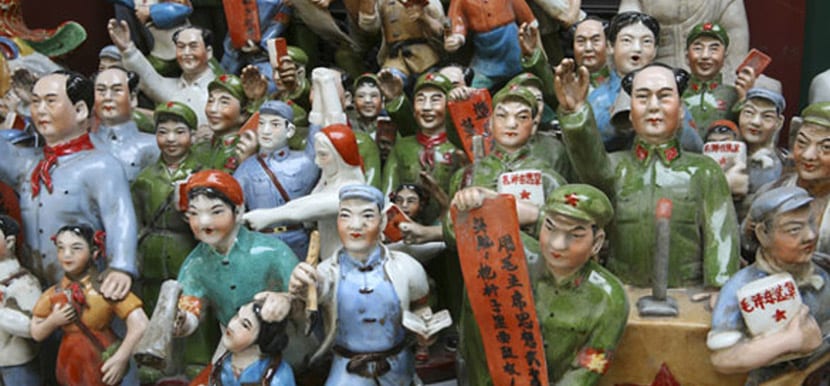
These are, in short, some of the typical Chinese crafts that are bought in Beijing, but you must add clothing, electronic items, a typical Beijing liquor called Lotus liquor with 40% alcohol, a soy flour cake with a red paste inside that tries to be a sweet (if you like Asian sweets it is very good, if not), and some crunchy candies with sugar and sesame that are very popular (the most famous brand is shaped like a red lobster). And as I said above, you can also buy a wide and varied souvenir memorabilia of Chinese communism.
Where to shop in Beijing
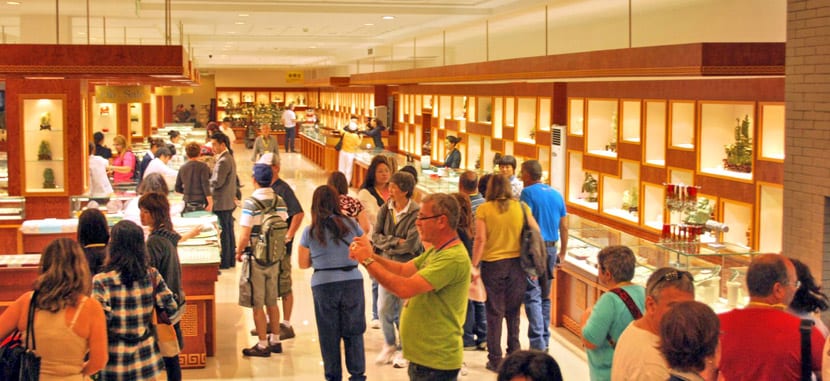
In Beijing there are shopping streets, shopping centers, areas specialized in certain articles and street markets. And also duty free shops. These stores are very new here as they have been operating since July 2015. If you spend more than CNY 500, they will refund 9% of the purchase. There are 96 Tax Free shops and they are mostly on Wangfujing and Xidan streets.
La Xiushui street is a huge market dedicated to silk that works in the Chaoyang district. Ten years ago this old street was turned into a shopping center where today you can find more than a thousand stores that sell silk items and there are even stores that make custom-made suits for you. There is a silk museum on the third floor, but you will see that some shops also sell tea, porcelain, paintings and calligraphic items.
Qianmen is a very famous pedestrian. It is 840 meters long and about 21 meters wide. There are old buildings on both sides and a multitude of traditional and international shops. This is where you find H&M, Zara or Haagen-Dazs, for example. And there are also many restaurants and something I recommend to do is climb the old tram, the Dangdang Che, which dates back to the 20s and provides a fantastic tour.
Markets in Beijing
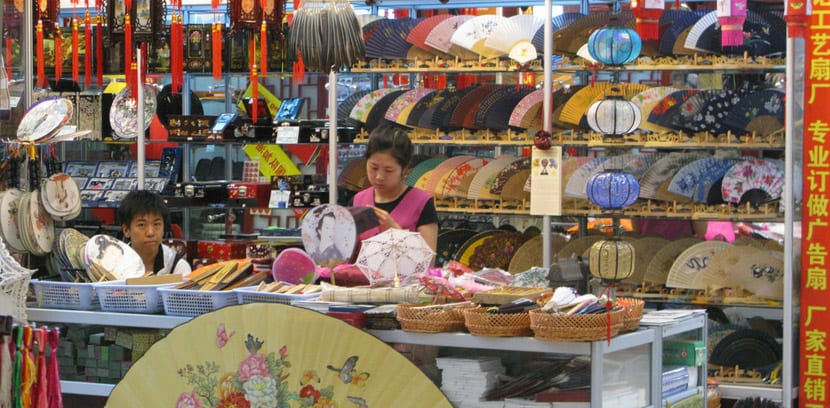
Beijing has many markets and I think you have to visit most of them. The Pearl Market or Hongquiao is in Chongwe districtn, in front of the Tiantan Park. It is very popular and everyone comes to buy pearls as it is the most important pearl distribution center in the country, although it also sells silk, electronic products and even fish and seafood. It has 4500 square meters and eight floors.
There is also the Curiosity Market, Curio City, with more than 23 thousand square meters of surface, 500 stores that sell everything and there are usually special exhibitions: in October there is an Exhibition Fair, in January a Folk Culture Festival and in May the Auction Week. Thousands of people always visit it. If instead you like flea markets there is the Panjiayuan Market, the largest market for selling second-hand products in a city. And a kind of museum, if we think about it better.
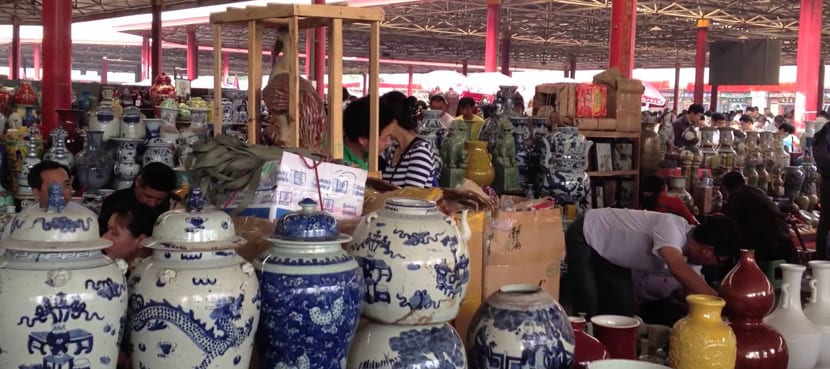
El Liangma Market It dates back to the 90s and has 200 stores that sell, like the other markets, porcelain, jade, carpets, Chinese lamps, paintings, clocks and even cameras. There is also room for the old in the Lvjiaying Antique Market of Antique Furniture and with 150 workshops that make furniture.
Another such market is Gaobeidian Market of Chinese Classical Furniture. If it rains you can go to the indoor market of the Fenzhong Temple, also dedicated to furniture. Finally, you have to know that around Chinese temples there are usually markets that it is advisable to visit.
Shopping malls in Beijing
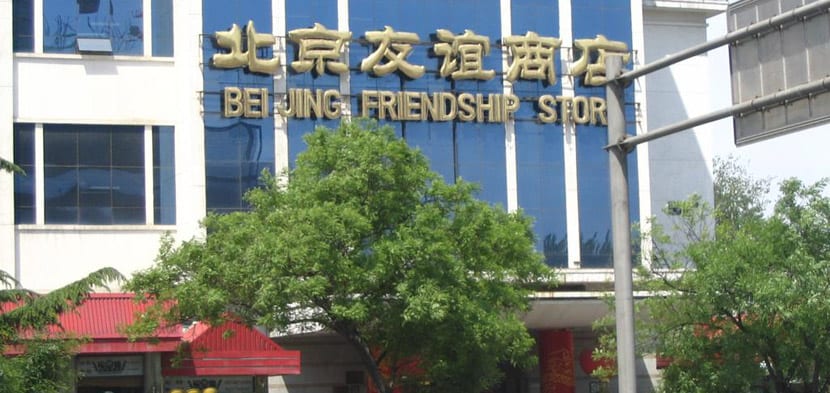
There is nothing new here under the sun, they are gigantic shopping centers with the best known international brands and other typical ones from Asia: Parkson, Shin Kong Palace or Beijing Friendship Store, are some of them. They sell clothing, footwear, electronics, cosmetics, jewelry, household items. You can pay with credit card and they have ATMs inside.
One of the largest and oldest is the Beijing Friendship Store It opened in 1964. This particular mall is worth a stroll.
Bookstores and other traditional shops in Beijing
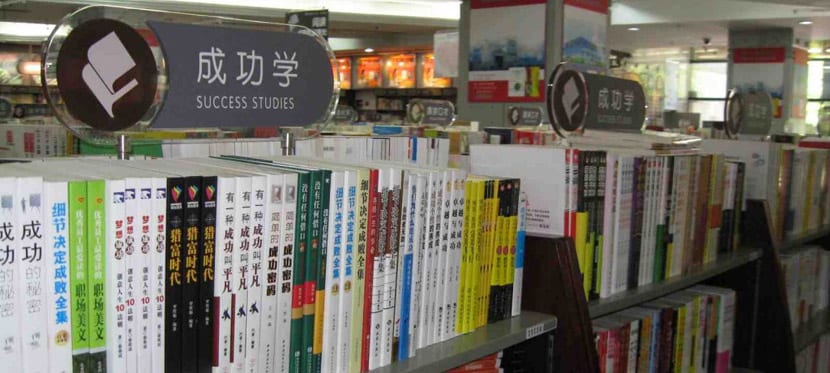
Beijing has many bookstores but not all of them sell books in languages other than Chinese. Many of these bookstores today also sell CD's or DVD's. Xinhua is the largest bookstore chain in the country, there are thousands of stores across the country. You can find some other book in English. For cheap books Chinese bookstore It is another store, smaller, but well nourished too. And it sells Chinese calligraphy and art books for which you don't need to know Chinese.
La Beijing University Library of Culture and Language It is the best store if you study Chinese and want to buy encyclopedias, dictionaries and grammar books. It is on Chengfu Lu Street in the Haidian District. On the other hand, Beijing Book is a store that sells books in English and other languages.
In Beijing there are also many centuries-old and traditional shops: we can talk about the Rui Fu Xiang's Cotton and Silk Shop, opened in 1893, specialized in the sale of silk, leather and today in the manufacture of tailored suits. You find it in the Xuanwu district, on Dazhalan Jie Street. To buy shoes you can try in Nei Lian Sheng, Mao's shoe store, in the same area, and following in the area very close is the Bu Ying Zhai shoe store, a mid-XNUMXth century store that sells both leather and exquisite silk shoes.
La Yuan Chang Hou Tea House It is a well-known and traditional shop that sells very good tea. It is in the Xicheng district. Do you want handmade hats and caps? Sheng Xi Fue is the store, in Dongcheng district.
Tips for shopping in Beijing
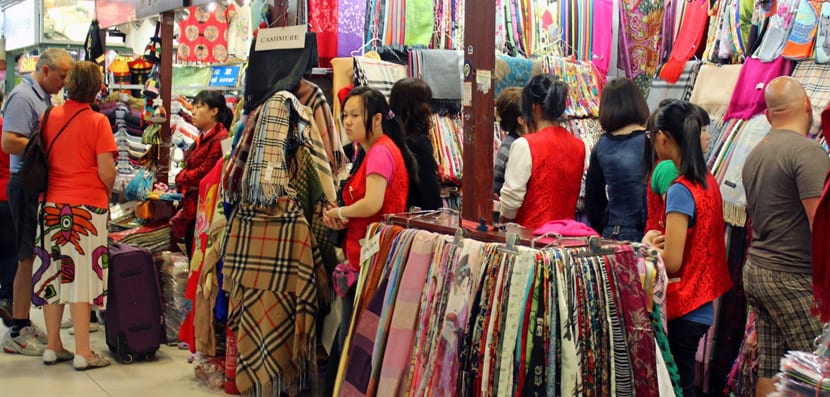
There is not much to say but one word: haggling. The Chinese like to haggle. Haggling is part of the commercial culture so go ahead and do it. You may be embarrassed at first, but when you hold his hand it's even fun. Also consider that when buying international brands, you are most likely buying an imitation. Do not think that they are original things, so try to buy the best possible imitation.
It is also convenient go to different stores or stalls asking prices these vary, and if it is about electronic products, beware!